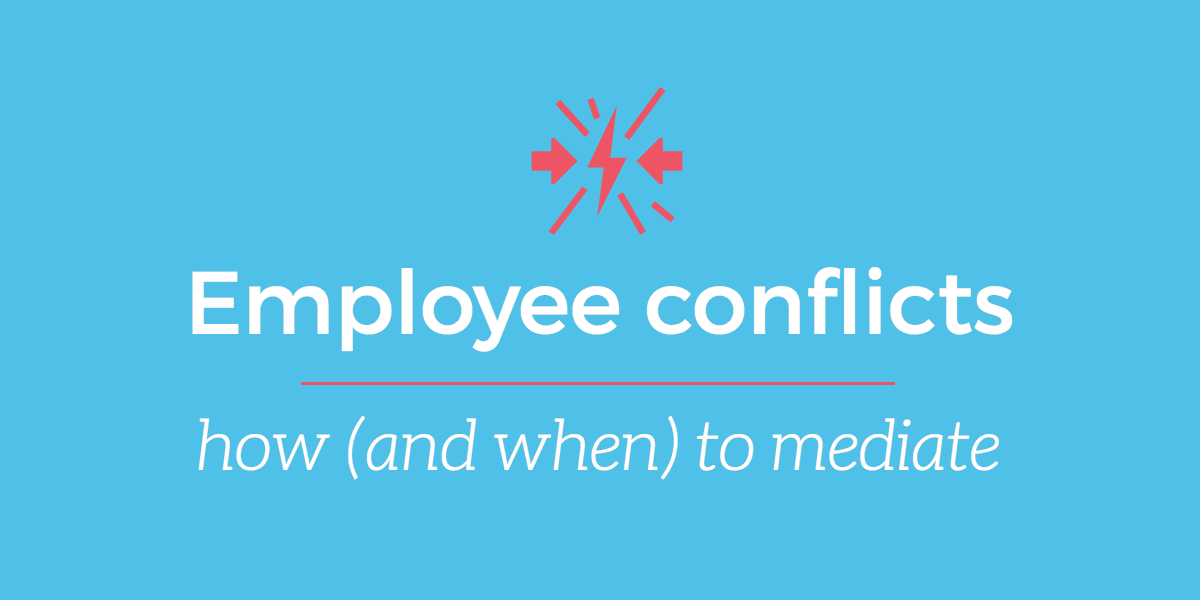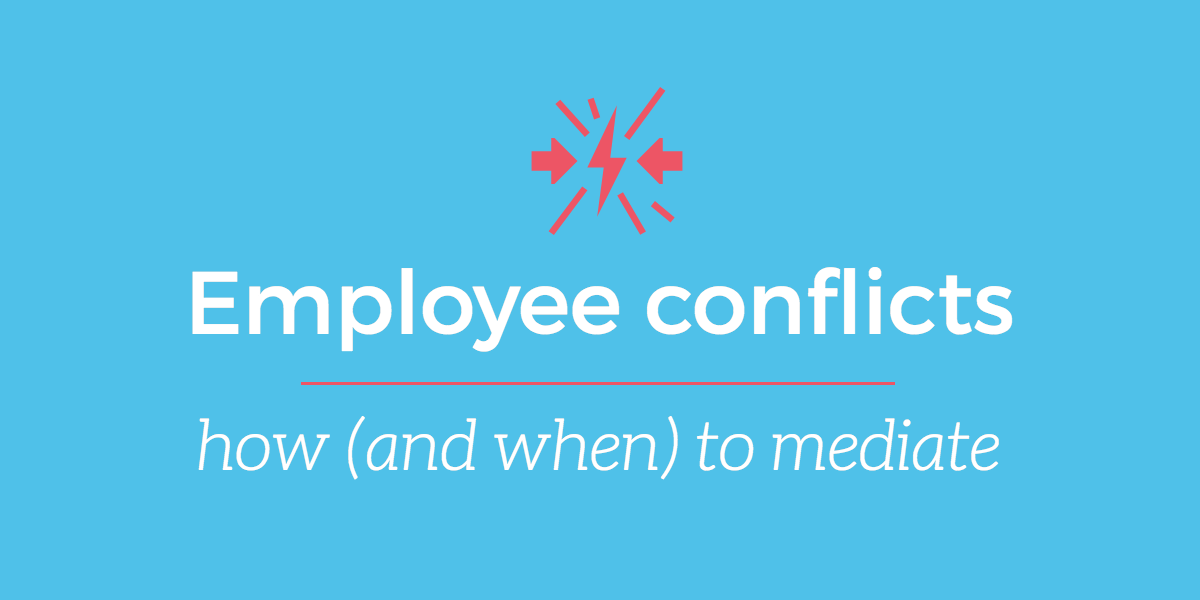
In any workplace with more than one person, conflict is bound to happen. Disagreements about how to handle common work-related issues— such as which technological solutions to adopt or how to proceed with a client— are a normal part of doing business. These kinds of minor conflicts can even be constructive, leading to process improvements, innovation, and healthy competition.
However, sometimes minor disagreements turn into full-blown arguments. Unless they’re handled quickly and properly, these situations can turn emotional and toxic, and can threaten the peace of the entire workplace. In these cases, it’s important for all involved parties to have a defined process (and possibly supervisor intervention) to help them bring the conflict to a peaceful resolution.
If your workplace doesn’t have a tried and true conflict resolution process, here are some steps that can help you navigate the experience successfully:
Understand the conflict
Before stepping into the discussion, it’s important for supervisors and HR managers to remember that not every employee conflict needs intervention; some smaller issues can be more effectively worked out between employees. Reacting to every disagreement would eat up your entire workday, every day. When an employee squabble comes to your attention, use your judgment to determine whether or not it’s being handled professionally. Supervisors only need to step in if the disagreement has the potential to become emotionally toxic or disrespectful, or if it’s affecting team productivity.
Avoid engaging in or listening to office gossip and conjecture from unaffiliated parties; the truth tends to take on a different shape after it’s been passed through multiple peoples’ opinions. It’s also unwise to ask involved parties about their point of view privately. You’re likely to get a polarized version of the story from everyone involved, making it even more challenging to know how to proceed. Instead, act quickly to get all employees involved in the conflict in one room to discuss how to move forward.
Prepare for a positive outcome
Once it’s clear that an employee disagreement needs intervention, it’s time to prepare for a positive, fruitful discussion. Pick a time and a quiet, private place in the office to meet. Prior to meeting, remind everyone that the purpose of the discussion is not to air grievances. Instead, the goal should be a mutually agreeable resolution to the conflict.
At the start of the discussion, before either party has a chance to lay out their frustrations, determine what the ideal outcome of the meeting would be for everyone involved. Is the goal a better working relationship? More defined separation of roles and responsibilities? A new process for managing a common work task? Identifying what constitutes a successful outcome for everyone involved sets the tone of the meeting and keeps the discussion future-focused.
Hear everyone out
After the ideal future outcomes have been defined, it’s time to allow everyone to describe the sequence of events that contributed to the conflict. Ask each person to briefly outline the situation as they see it, without interruption from anyone else. Ideally, the discussion should stay focused on facts, not feelings. But remember you’re dealing with humans; emotions will inevitably creep in. This is normal and to be expected.
As with any kind of personal confrontation, it’s best if everyone can explain their point of view without using “you always” or “you never” language. Instead, encourage them to frame their frustrations using phrases like “I feel” or “I think.” This allows each person to express their emotional response to the situation, but keeps the discussion from becoming too combative.
Above all, it’s important that as a mediator, you avoid taking anyone’s side in the debate. Unless there have been cases of clear disrespect that require you to weigh in, remain as neutral as possible and keep the discussion future-focused.
Identify next steps
Once everyone has had the chance to have their frustrations heard, it’s time to define the steps that will allow a positive resolution. Ask each person to lay out what the other party (or parties) could do that would make the work relationship more positive in the future. If it’s helpful, use a “start, stop, continue, more of, less of” framework to get everyone thinking about what a workable outcome looks like to them.
Remind everyone that they don’t need to leave this meeting on friendly terms; they just need to be able to work together peacefully. It may also be helpful to determine how these employees can handle future contentious situations as they arise.
In some cases, it might be untenable for two employees to continue to work together respectfully. If that’s due to a mismatch in personalities and work preferences (and not one employee antagonizing another), reorganizing the team structure to minimize or discontinue the working relationship may be a good option.
If, however, the dispute involves one employee behaving disrespectfully or out of compliance with company expectations (as laid out in their employee handbooks), it may be necessary to take disciplinary action. At the lowest level, this might mean documentation and continual check-ins. However, if the employee’s behavior warrants it, dismissal may be the right choice to protect the company and its employees.
Take note
Shortly after the dust has settled, it’s a good idea to document the broad strokes of the discussion and the agreed-upon outcomes. Not only will this help you see if certain employees have patterns of behavior that make them more prone to workplace conflict, but it will help you reflect on what went well and what could be improved the next time you are called upon to resolve a dispute.
While managing employee conflict is nobody’s idea of a good time, it comes with the territory as an HR manager or corporate leader. Learning to defuse and resolve the situation as quickly and satisfactorily as possible will help maintain peace and productivity in your workplace, and can sharpen your managerial skills for future challenges.


